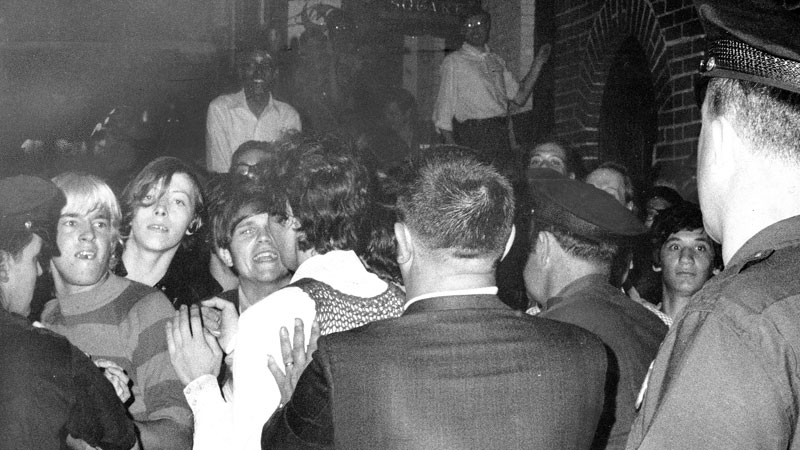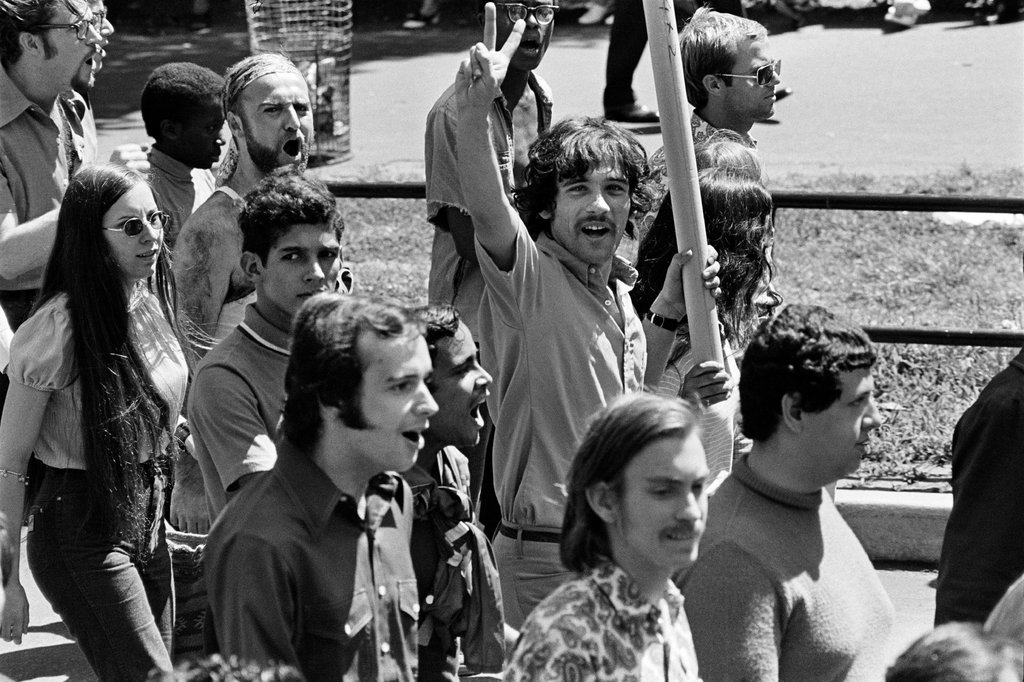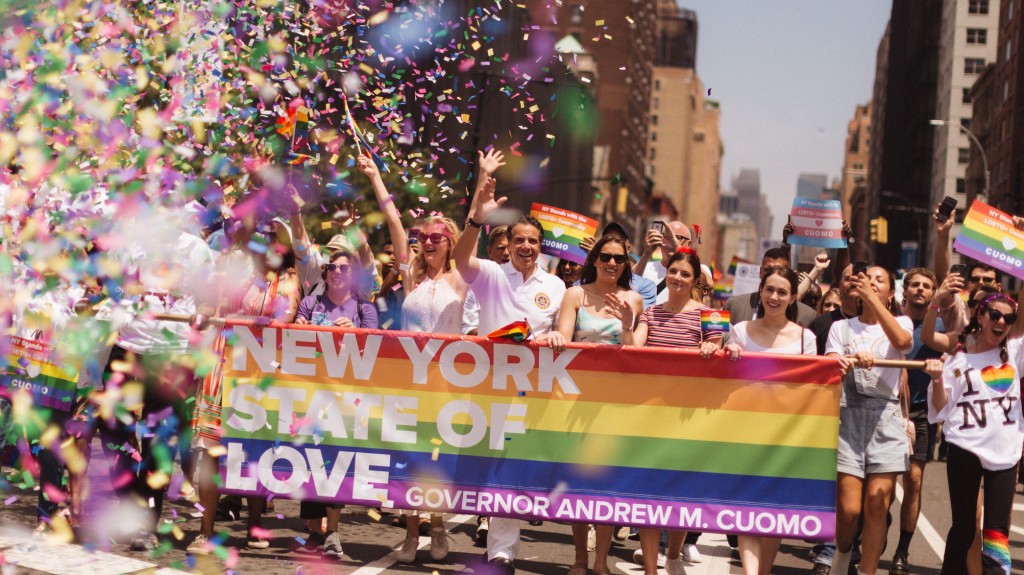Nan Pang
With 2020 fast approaching, it is the time of year for end of year reflections. This year marked the half-century anniversary of some significant events in modern American history. While Neil Armstrong was taking one giant leap for mankind on the moon in 1969, back on Earth, a hairpin drop from Greenwich Village was heard around the world. The Stonewall riots are a significant turning point in the modern LGBTQ+ movement, and its legacy of struggle and triumph continues to impact the world today.
The History
The living situation for LGBTQ+ people in the 1960s was far from ideal. At this time, employment discrimination towards LGBTQ+ people had not yet been criminalized, and some were still arrested for their same-sex relationships citing state sodomy laws. In fact, in nine states, sodomy laws were explicitly rewritten so that they only applied to gay people. Although New York City offered the LGBTQ+ community a small taste of freedom, it was still oppressive. Gays in New York formed a community around Christopher Street in Greenwich Village despite the common police raids of pro-LGBTQ+ bars in the 1960s. In June 1969, however, something changed. The patrons at the Stonewall Inn had finally had enough. Their fury from echoed across the US and became a liberation movement.

Credit: NY DAILY NEWS ARCHIVE / GETTY
On June 28, 1969, as the clock struck a quarter past one, eight police officers raided the Stonewall Inn. “Police! We’re taking the place!” Over 200 people were at the bar that night—chaos erupted as many started to flee the scene, but the police blocked the doors. “Things happened so fast you kind of got caught not knowing. All of a sudden there were police there and we were told to all get in lines and to have our identification ready to be led out of the bar,” says Michael Fader, who was at the Stonewall that night.
However, the raid did not go as initially planned. Normally the bystanders would just watch as the police made arrests—a typical scene at a gay bar raid back then. That night at Stonewall, something unprecedented happened. Whether it was a hairpin, or a coin, or a brick, something was thrown at police from the crowd. Then a transgender woman in handcuffs was escorted from Stonewall while she fought with four of the police. As she had been hit on the head by an officer with a baton, she looked at bystanders and shouted, “Why don’t you guys do something?” The scene exploded and quickly became a massive riot as bar patrons, bystanders, and police became more aggressive and violent. That night, one small pebble thrown at injustice caused hundreds of ripples, which eventually became larger waves in the LGBTQ+ liberation movement.
The Legacy
Since the Stonewall riots, June has become a month of celebration for the LGBTQ+ community. On June 28, 1970, which marked the first anniversary of the Stonewall riots, over 5000 women and men marched from Christopher Street to Central Park, which marked the first Gay Pride march in U.S. history along with satellite marches in Los Angeles and Chicago. In 1971, Gay Pride marches also took place in Boston, Dallas, Milwaukee, London, Paris, West Berlin, and Stockholm. By 1972, the participating cities expanded to Atlanta, Buffalo, Detroit, D.C., Miami, Minneapolis, and Philadelphia, as well as San Francisco.

Credit: Michael Evans/The New York Times
This is when the same-sex marriage movement began in the US with Baker v. Nelson seeking legal recognition of same-sex relationships. Although the Baker v. Nelson plea was unsuccessful, it served as a stepping-stone to further legal challenge as the Supreme Court suggested the possibility that the state’s prohibition might be unconstitutional. This decision caused a stir in public discussion, as well as increased awareness of the movement in the United States. The same-sex marriage rights movement finally came to fruition in Massachusetts in 2004. Same sex marriage was legal in two states in 2008, eight states and D.C. in 2012, and eventually in 37 states. While this movement was a victory for same-sex couples, it also provoked a reaction from opponents of same-sex marriage, which resulted in lawsuits in certain states that still denied marriage licenses to same-sex couples. On June 26, 2015, the U.S. Supreme Court in Obergefell v. Hodges struck down all state bans on same-sex marriage and finally brought marriage equality to all fifty states. While this Supreme Court decision recognized marriage equality across all states, Justice Anthony Kennedy embodied the quintessence of marriage in the final paragraph of his opinion, emphasizing why LGBTQ+ people have fought so hard for same-sex marriage:
“No union is more profound than marriage, for it embodies the highest ideals of love, fidelity, devotion, sacrifice, and family. In forming a marital union, two people become something greater than once they were. As some of the petitioners in these cases demonstrate, marriage embodies a love that may endure even past death. It would misunderstand these men and women to say they disrespect the idea of marriage. Their plea is that they do respect it, respect it so deeply that they seek to find its fulfillment for themselves. Their hope is not to be condemned to live in loneliness, excluded from one of civilization’s oldest institutions. They ask for equal dignity in the eyes of the law. The Constitution grants them that right.”
Stonewall: Fifty and Beyond

In June of this year, New York City hosted WorldPride during the fifty-year anniversary of the Stonewall riots. The New York Post reported that “there were about 150,000, or twice the usual number of participants marching down Fifth Avenue this year, easily the most ever.” At the same time, there was an estimate of “another more than 2.5 million, or greater than the typical number, showed up along the sidelines to cheer them on.”
The LGBTQ+ rights movement in the US has made significant progress since the Stonewall riots. Today, we benefit from LGBTQ+ rights secured by our predecessors’ fierce fight for the past fifty years and before. Recent Gallup polls show that the United States has made some dramatic shifts in LGBTQ+ acceptance in 2019 since its first poll in 1977. While LGBTQ+ rights advocates can count many victories in recent decades since the Stonewall riots, there are still areas where activists seek improvements.
For instance, although society has become more accepting towards the LGBTQ+ community, as the poll indicates, LGBTQ+ youth still face rejection and discrimination. They are five times more likely to have attempted suicide as their peers. In more recent events, despite the fact that the overwhelming majority of Americans (71%) support transgender people in the military, the current administration instructed the Armed Services to begin discharging transgender service members effective April 12, 2019.
As we acknowledge and appreciate our predecessors’ tremendous struggles, efforts, and victories, we must also think about what we can leave behind for future LGBTQ+ generations. While activists and advocates address such issues tirelessly, we as a society sometimes underestimate the power of our own voices and actions. The Stonewall Inn became a beacon of hope for the LGBTQ+ movement and proudly still stands. Its neon light has been, and will be, navigating us toward the courage to speak up and will give us the tenacity to fight injustice, just like that single hairpin fifty years ago shaped the society that we know today.
Editorial Note: this article was originally published in the Memorial Sloan Kettering Cancer Center LGBTQ+ Pride Employee Resource Network Newsletter and was revised by the Natural Selections Editorial Board.

